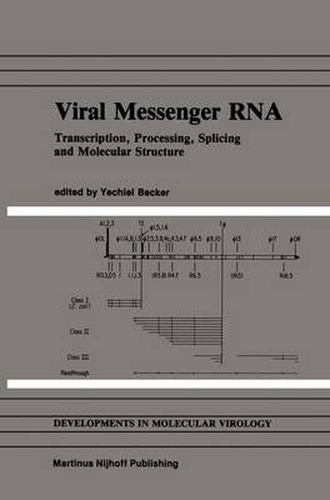Readings Newsletter
Become a Readings Member to make your shopping experience even easier.
Sign in or sign up for free!
You’re not far away from qualifying for FREE standard shipping within Australia
You’ve qualified for FREE standard shipping within Australia
The cart is loading…






This title is printed to order. This book may have been self-published. If so, we cannot guarantee the quality of the content. In the main most books will have gone through the editing process however some may not. We therefore suggest that you be aware of this before ordering this book. If in doubt check either the author or publisher’s details as we are unable to accept any returns unless they are faulty. Please contact us if you have any questions.
The nucleotide sequence of the gene from which messenger RNA mole cules are transcribed is in a form that can be translated by cellular ribosomes into the amino acid sequence of a particular polypeptide, the product of the gene. The discovery of messenger RNA more than twenty years ago led to a series of studies on its organization and function in cells in the presence of infecting viruses. This volume is devoted to current studies in the field of cellular and viral messenger RNA. The studies presented provide an insight into molecular and genetic aspects of messenger RNA. Special attention was paid by the authors to the molecular organization of mRNA species, to the processing of mRNA molecules, and to the different strategies employed by DNA and RNA viruses in the synthesis of their mRNA. The ability of a virus to take over the protein-synthesizing mechanisms of an infected cell depends on its ability to produce mRNA molecules which can affect the host mRNA or utilize cellular components more efficiently. The differences between, and similarities of, the strategies of mRNA synthesis devised by various DNA and RNA viruses are described herein. This book should be of interest to all students of cellular and viral genes and scientists in the field. It is suitable as a textbook for workshops and courses on mRNA. I wish to thank the authors for their fine contributions and for their interest.
$9.00 standard shipping within Australia
FREE standard shipping within Australia for orders over $100.00
Express & International shipping calculated at checkout
This title is printed to order. This book may have been self-published. If so, we cannot guarantee the quality of the content. In the main most books will have gone through the editing process however some may not. We therefore suggest that you be aware of this before ordering this book. If in doubt check either the author or publisher’s details as we are unable to accept any returns unless they are faulty. Please contact us if you have any questions.
The nucleotide sequence of the gene from which messenger RNA mole cules are transcribed is in a form that can be translated by cellular ribosomes into the amino acid sequence of a particular polypeptide, the product of the gene. The discovery of messenger RNA more than twenty years ago led to a series of studies on its organization and function in cells in the presence of infecting viruses. This volume is devoted to current studies in the field of cellular and viral messenger RNA. The studies presented provide an insight into molecular and genetic aspects of messenger RNA. Special attention was paid by the authors to the molecular organization of mRNA species, to the processing of mRNA molecules, and to the different strategies employed by DNA and RNA viruses in the synthesis of their mRNA. The ability of a virus to take over the protein-synthesizing mechanisms of an infected cell depends on its ability to produce mRNA molecules which can affect the host mRNA or utilize cellular components more efficiently. The differences between, and similarities of, the strategies of mRNA synthesis devised by various DNA and RNA viruses are described herein. This book should be of interest to all students of cellular and viral genes and scientists in the field. It is suitable as a textbook for workshops and courses on mRNA. I wish to thank the authors for their fine contributions and for their interest.